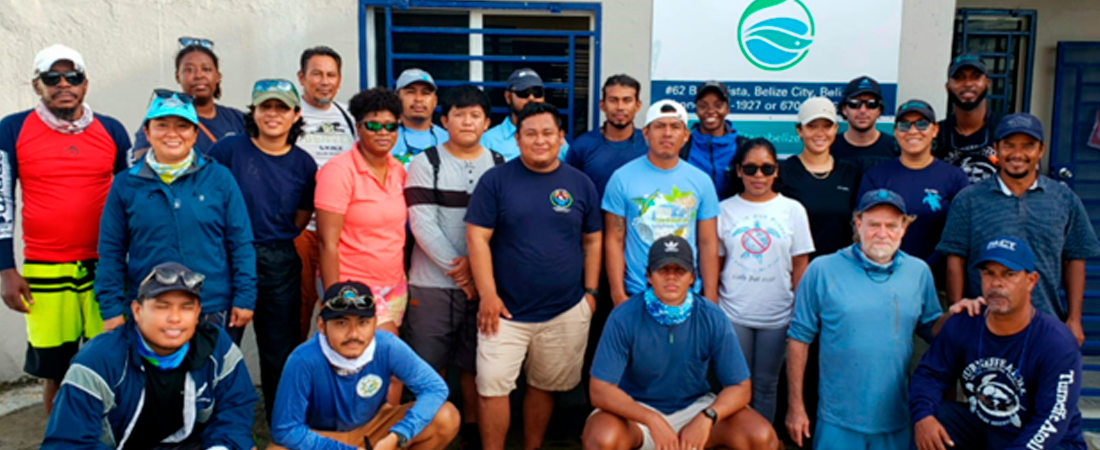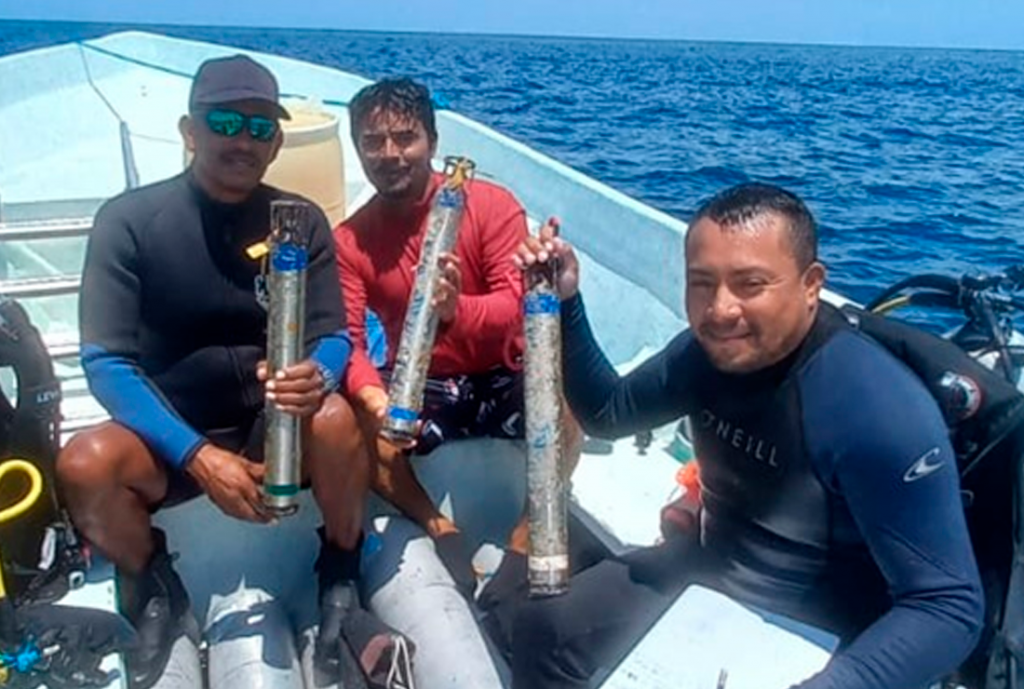Monitoring and Protecting Fish Spawning Aggregations at Turneffe Atoll, Belize

By Sarah Poon & Nicanor Requena
From July 1, 2022, to October 30, 2023, the Environmental Defense Fund (EDF) and the Turneffe Atoll Sustainability Association (TASA) advanced monitoring and protection for fish spawning aggregations (SPAGs) at Turneffe Atoll and throughout Belize. The project aimed to advance sustainable fisheries management by demonstrating how monitoring SPAGs can strengthen Belize’s adaptive multispecies finfish management plan.
The project team implemented SPAGs monitoring activities at three important sites during the December, January, February, April, and May full moons, applying an updated monitoring protocol that aligns with regional standards and best practices. The monitoring team moored hydrophones at each site to monitor spawning and vessel activity for the full spawning season. The team completed 34 dive surveys, monitoring various finfish species through transect counts and laser sizing of individual fish. The divers observed indicators of spawning preparations, including gravid fish, colour changes, and aggregation behaviours. During the December dives, the team observed as many as 2,300 Nassau groupers, a powerful reminder of the importance of protecting these iconic fish during the spawning season.
The project played a key role in strengthening collaboration and communications related to SPAGs in Belize. It helped reactivate Belize’s Spawning Aggregation Working Group (SAWG), which is now meeting quarterly to define priorities and actions for advancing and proliferating SPAG protection; explore ways to access funding to monitor SPAG sites across the Belize network; and share knowledge, monitoring protocols, and results among resource managers and key stakeholders, including fishers.
EDF and TASA worked collaboratively to ensure strong fisher participation in the SAWG and to share the lessons and results from SPAGs monitoring at Turneffe Atoll with the group. EDF, TASA, and the SAWG communicated the importance of SPAGs through a compelling video that aims to heighten fishers’ awareness of the importance of their protection during the spawning season.
The video and other SPAGs-related media were shared via the Small-Scale Fisheries Resource and Collaboration Hub, a platform for regional and global knowledge sharing. Other communications included community events and direct “boat-to-boat” outreach to fishers.
EDF, TASA, and the SAWG analysed monitoring data from the 2022-2023 season to draw insights about the abundance and health of important finfish species and identified implications of the results for the long-term sustainability of Belize’s finfish fishery. The analysis indicated that the monitoring data provided useful information for fisheries decision-making and that continuing to collect data in a consistent way over time can ensure this data directly feeds into the finfish adaptive management framework. The project will help shape the future of SPAGs monitoring to ensure the successful implementation of Belize’s adaptive multispecies finfish fishery management plan, supporting the climate resilience of Belize’s fisheries, ecosystems, and communities.
- Dr. Will Heyman, Virginia Burns Perez, Stuart Fulton and Nicanor Requena, SPAGs trainers for the Spawning Aggregation Monitoring Training held in October 23-27, 2023 at Calabash Caye, Turneffe Atoll Marine Reserve.
- Some participants of Spawning Aggregation Monitoring Training held October 23-27, 2023 at Calabash Caye, Turneffe Atoll Marine Reserve.
- Participants of the Belize Spawning Aggregation Monitoring Training held October 23-27, 2023 at Turneffe Atoll Marine Reserve.
- Andres Aldana, Nicanor Requena and David Cal retrieving acoustic hydrophones at Turneffe Atoll Marine Reserve.
- Belize Spawning Aggregation Working Group meeting held in May 2023 in Belize City.
- Belize Spawning Aggregation Working Group handing over copies of the working group’s newsletter members of the Chunox Fishermen Association.










